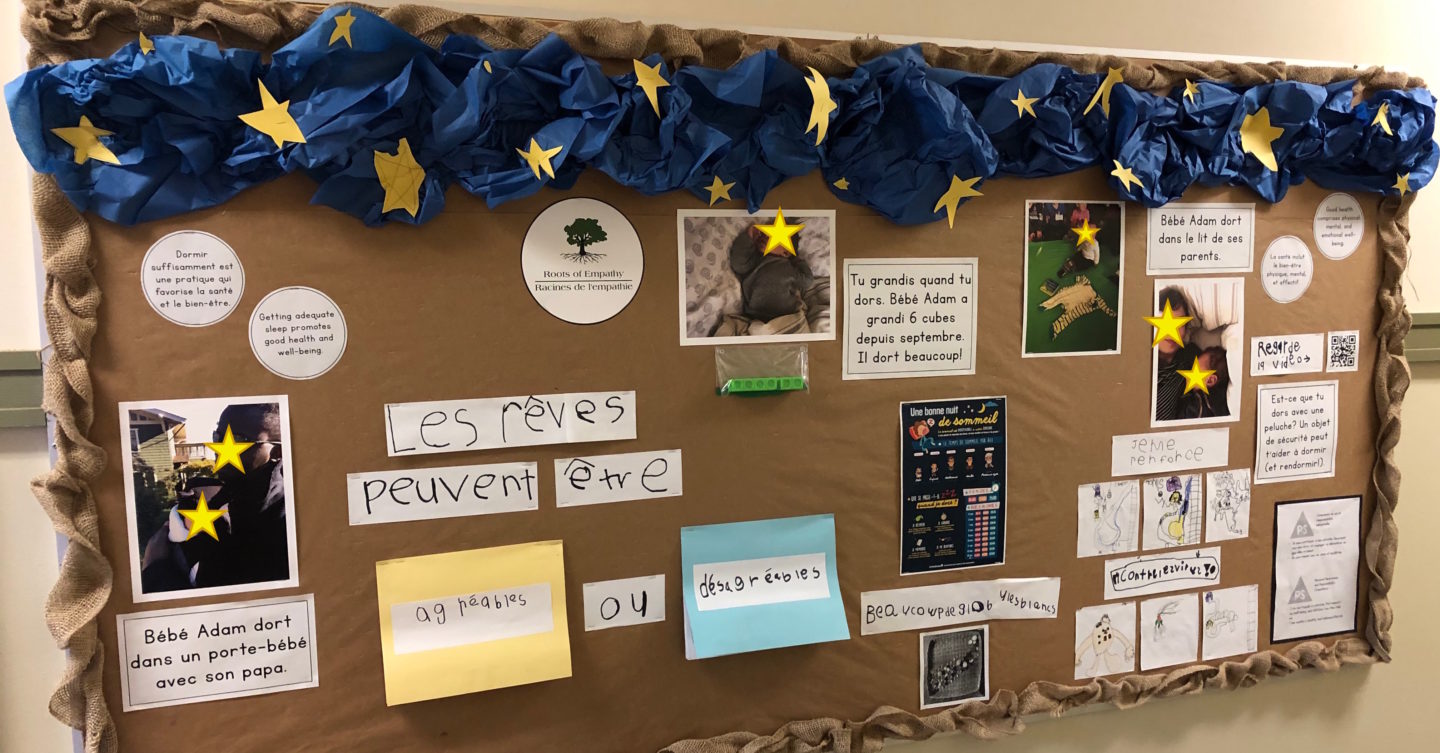
Documenting
As I strive to make learner thinking more visible in my classroom, I also consider the role of documentation in this work. Project Zero researchers Mara Kerchevsky, Terri Turner, Ben Mardell, and Steve Seidel define documentation “as the practice of observing, recording, interpreting, and sharing, through a variety of media, the processes and products of teaching and learning in order to deepen learning” (here).
Our collaborative inquiry evolved out of an investigation into sleep in connection with our Roots of Empathy (ROE) program learning. Since sleep is so closely connected to our Physical and Health Education curriculum, and it is a hugely important facet of health which receives little attention in schools, and my learners were responding with such interest to this learning, I decided to push for a more detailed documentation which would serve many purposes. While many of our questions were explored with the think, pair, share routine (and not necessarily documented), I chose to document some of the thinking and learning around sleep in greater detail.
The inquiry explored many questions:
Why is sleep important?
What happens inside out bodies while we are asleep?
Does everyone dream?
What do dreams mean?
What do you do if you have a bad dream? What helps you feel better?
What helps you feel safe at night?
Is it hard to fall asleep?
How can you help yourself fall asleep?
Do you sleep with a suffie?
How much sleep do people need?
Why do babies sleep so much?
What is your bed like?
Do you sleep by yourself?
The documentation serves to advance learning for my learners, but also for the wider community. By capturing and recording the student thinking around sleep, I am signalling that these thoughts and ideas have value and are worthy of further examination. In this picture of practice, learner thinking is documented in a dream reflection page. The dreams were categorized as pleasant or unpleasant and then displayed in a flip-book style. The key idea here is that everyone can have both kinds of dreams, and that dreams can make us feel real emotions. I am interested in the student thinking surrounding dreams and emotions because a large body of research indicates French immersion learners struggle to express their emotions in French. The dreams themselves provide such a rich setting through which to examine the learner thinking surrounding cause and consequence, perspective taking, and evidence as they relate to emotions. Additionally I chose to explore this thinking by documenting the student reflections about what helps them feel safe in order to fall asleep at night using a video format (created with student artwork, and voice recordings using Adobe Spark). A QR code makes it possible for the video to be shared in the hallway documentation panel as well.
The documentation panel doesn’t only hold student thinking, it also holds curriculum connections, data we collected about baby Adam’s growth, and contributions made by community members who supported this learning (ROE instructor, and family). A sleep guideline health initiative poster is also shared here. Our learners used this poster to help build their understandings, and as such it served as a tool for our learning as well.
The documentation serves to record student thinking, reflections, and ideas, but it also serves as a communication tool with families and other community members. I also share the documentation digitally with families on FreshGrade which strengthens the connection between home and school and invites conversation about the thinking and learning.
The ROE program lessons occur in English with a certified instructor. The learning is strengthened when the teacher (me) chooses to extend the learning beyond these scheduled lessons; this creates a beautiful space for translanguaging. Here I can observe my learners adjusting the language according to whom they are speaking (speaking in primarily in French to me and in English to the ROE instructor). Since we are both showing interest in the thinking and the ideas, I believe learners feel more empowered to take risks to express their big ideas rather than limiting their expression of thoughts within their target language base.
